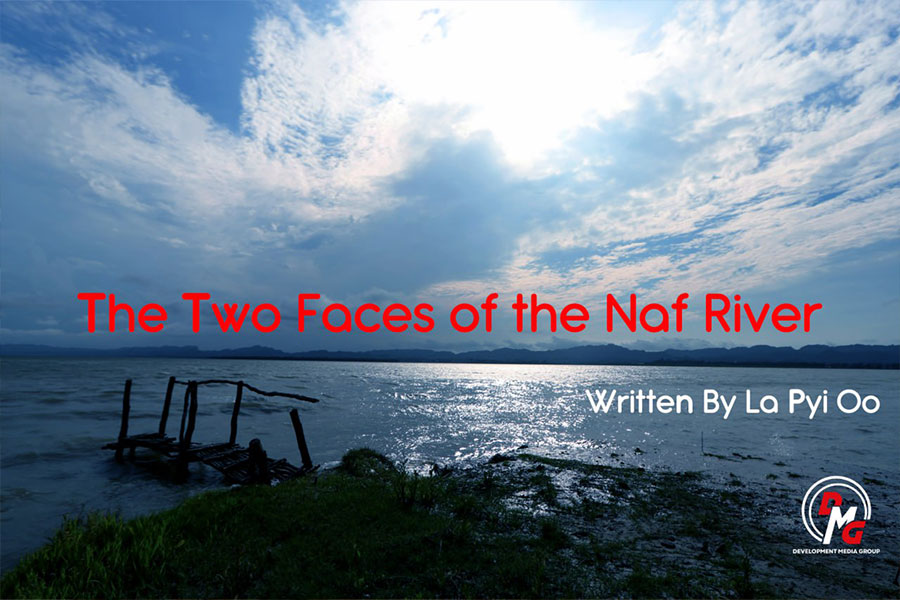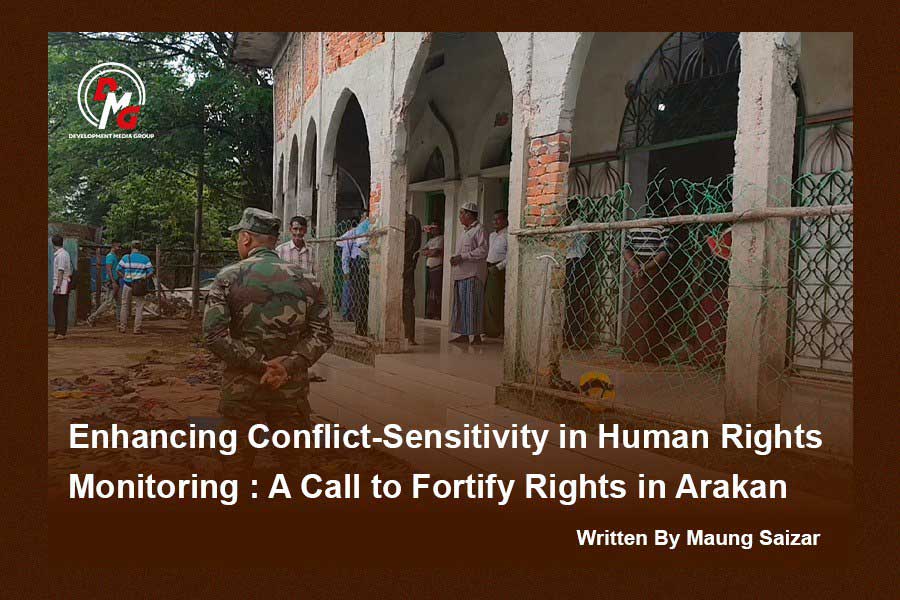- Junta unable to hold elections in dozens of wards and village-tracts in Sittwe, Kyaukphyu
- Fighting escalates between Myanmar military, Arakan Army in Ayeyarwady Region
- Regime steps up civilian arrests in Sittwe
- ULA safeguards Mrauk-U's ancient heritage
- Arakan on the Edge: What the DMG Landmine Impact Report Reveals About Myanmar's Deepening Humanitarian Crisis
Amid Development at Kyaukphyu, a Question Persists: For the Benefit of Whom?
Regarding the Kyaukphyu Special Economic Zone, some residents believe it will bring jobs if businesses come in with their technological expertise brought to bear. But others’ fears are also a big part of the discussion. Among their concerns: The SEZ could harm the environment, lands could be forcefully confiscated, and it may only be large companies that profit from the development, with local residents losing out.
01 Jan 2020
By Taung Zin Thar | DMG
In mid-November, I travelled to Kyaukphyu town, on Ramree Island in Arakan State, to meet a friend from Yangon. He produces documentary films, and was visiting Kyaukphyu to make a documentary about positive and negative impacts on locals and the environment along the Kyaukphyu-Kunming oil and natural gas pipelines and railway, which reach their terminus in Arakan State.
When we arrived at Kyaukphyu, we met regional activists, members of political parties and businesspeople.
From there, we continued to Maday Island, where the Chinese have invested more than US$3 billion. Via a small motorboat from Kyaukphyu town, Maday Island is about one hour away.
Arriving at Maday Island, we told our motorboat captain that we wanted to see the deep-sea port. He seemed nervous but took us to a place called Kyauk Maw Gyi, where we were able to see the deep-sea port and storage facilities.
We couldn’t glimpse them close up, however. We could see some military ships of the Tatmadaw (Navy) docked there, and our captain told us that soldiers were known to question passersby and barred them from getting near the facilities. So we turned back.
About 10 minutes later, we were at Maday Island’s jetty. We were greeted by a Welcome signpost, written in white lettering on blue background, which was in pretty good condition. And beside the Welcome signpost, a cardboard addendum was hung, prohibiting the sale and consumption of alcohol in the island’s villages.
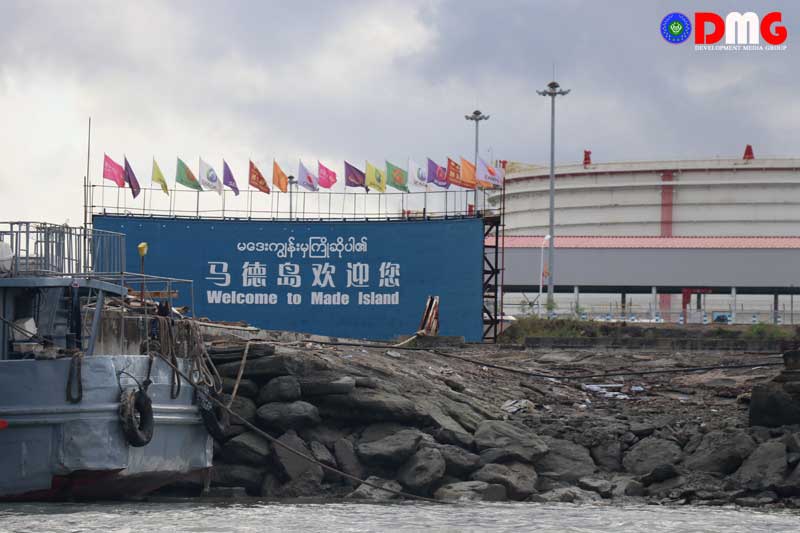
On Maday Island, there are two village tracts composed of four villages, namely Pyain, Ywar Ma, Kyauktan and Pahtainse. There are more than 740 households in total, residents said.
The major local “industries” are fishing, betel nut cultivation and farming, said a driver on the island.
From Maday jetty, we continued our journey to Kyauk Maw Gyi, a major site of the Chinese project. This deep-sea port, and its twin oil and natural gas pipelines, were built by China National Petroleum Corporation (CNPC), backed by the Chinese government.
The contours of ‘development’
We were told the island had four villages but we saw only one, with about 30 houses hosting folks involved in the project, including migrant workers. While walking around the settlement, I heard children reading aloud. I felt sad when I saw the building they were studying in; it was little more than a shanty. The tiny building is a village school. Its signpost beside the road read Basic Education Primary School, Kyaut Maw Gyi Village, Kyaukphyu Township.
The wobbly schoolhouse stands in stark contrast to the huge building behind it. In fact, the small school is only about 100 meters from the management office for the deep-sea port project. The school is what might be described as a self-sufficient operation. We saw two young teachers, hired by villagers who pay K25,000 (US$17) a year for their children’s education.
The village’s lone proper street was in very poor condition, scarred by potholes and covered in pebbles.
“Their cars drive on the same road. However, they have done nothing for the road. It is a struggle to travel on this road in monsoons because of the mud,” said Daw Wai Tin, a vendor in the village. She had to pay K20,000 for the chipseal to pave the road in front of her house.
Although the village was not established by the government, it is along the same road that leads to the project site, and to other villages.
Daw Wai Tin, who relocated to the village eight years ago from her former place of residence in Taungup Township, said a dam was built about one mile northwest of the project to supply fresh water to the project.
The village is close to the project area but there is no electricity or water access, she said, adding that they had to use solar and battery power for light.
Some village residents work at the project as daily wage laborers. Many thought that they would be well-paid, given the large scale of the project. It turns out they aren’t even paid K4,800 a day, which is the minimum rate set by the government. They are paid K4,000 daily, the workers said.
For fishermen, the project has been detrimental. There are fewer fish to be caught since it began, villagers said, and fishing has been prohibited in some areas around the project site and along the Thanzit River. Buoys on the river now form two lines nearly a mile long, denoting the designated path for boat traffic; specifically, for Chinese petroleum tankers. In this lane, no one is allowed to cast their fishing nets.
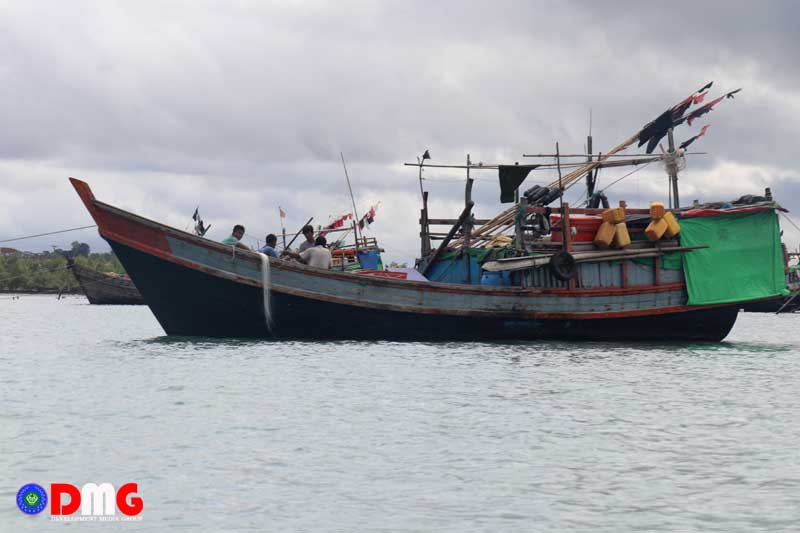
A man from the documentary film crew from Yangon, who is a former activist of the All Burma Federation of Student Unions, asked of the situation in the area: “How could we believe that this project would benefit the country and the people? Even people who live so close to the project area are not provided water or electricity. The school for children is a beat-up building. They don’t even repair the road they are using. ‘Benefiting the whole country’ is just words.”
The deep-sea port is the logical terminus of the Kyaukphyu-Kunming Railway project. Though the Myanmar government has currently only granted approval for the rail line to run from Kunming to Mandalay, the end-goal for the Chinese government’s regional economic policies make clear that Beijing will insist that it ultimately runs to Maday Island.
The reason is that if the rail line reaches Maday Island, Chinese exports wouldn’t have to pass through the South China Sea and the Malacca Strait.
The Chinese could distribute their products to the Middle East and Africa at a lower cost by bypassing those fraught waters and instead using Kyaukphyu as a more direct path to the Indian Ocean.
A sunset itinerary
Our tour of the island was circumscribed by the setting sun, at the boatman’s suggestion that we be back before dark. No boat is allowed to pass near Thit Pote Taung Navy Headquarters after 6 p.m., he said; a few months ago, a married couple travelling on a motorboat were fired upon and the husband was shot to death for passing the area after 6 p.m..
Regarding the Kyaukphyu Special Economic Zone, some residents believe it will bring jobs if businesses come in with their technological expertise brought to bear. But others’ fears are also a big part of the discussion. Among their concerns: The SEZ could harm the environment, lands could be forcefully confiscated, and it may only be large companies that profit from the development, with local residents losing out.
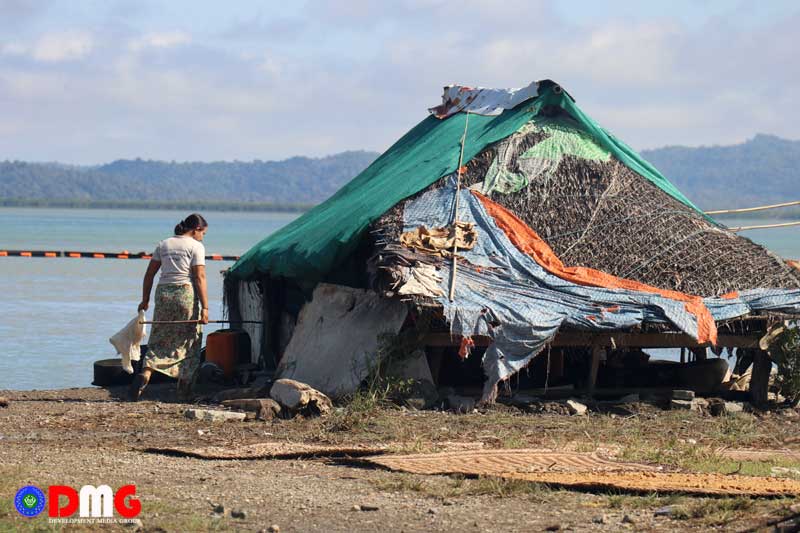
Ko Tun Kyi, a team leader of the Arakan Natural Resources and Environmental Network, said: “Firstly, residents will suffer the effect of the projects on Maday Island. The space they make their living in will become narrower. Their lands could be confiscated but their lives won’t improve in any way.
“Secondly, people in Arakan State will suffer from it, since nothing has stated what percentage of the profits from selling gas and oil will be used for Arakan State,” he continued.
“Then, the Myanmar government will suffer the effects in the long term. However, the Chinese government will always be benefiting from these projects.”
But Daw Wai Tin, the villager who chose to relocate here in search of a better life, still has hope that CNPC and local government officials will make good on promises of aid and development for all affected by the operations now underway.







